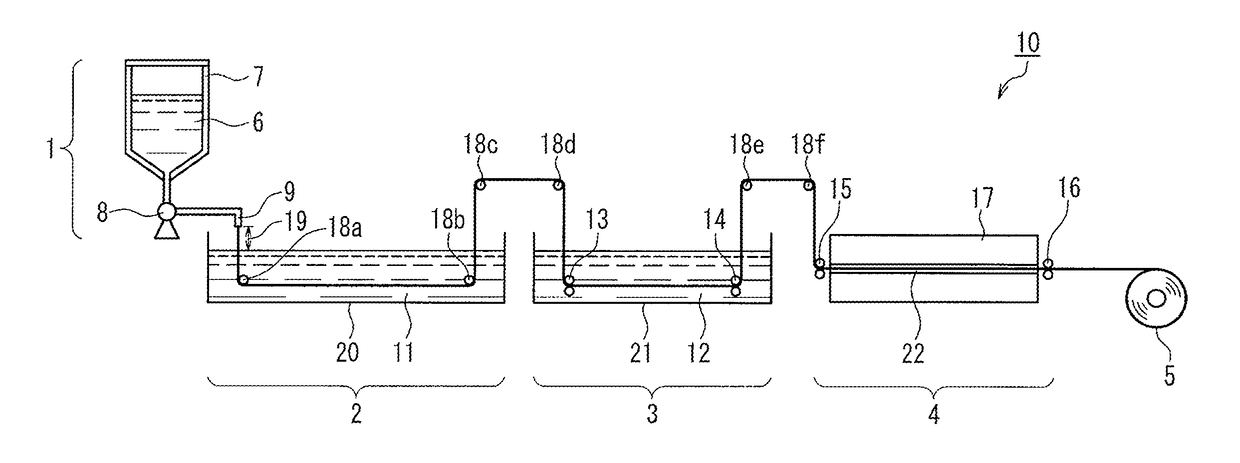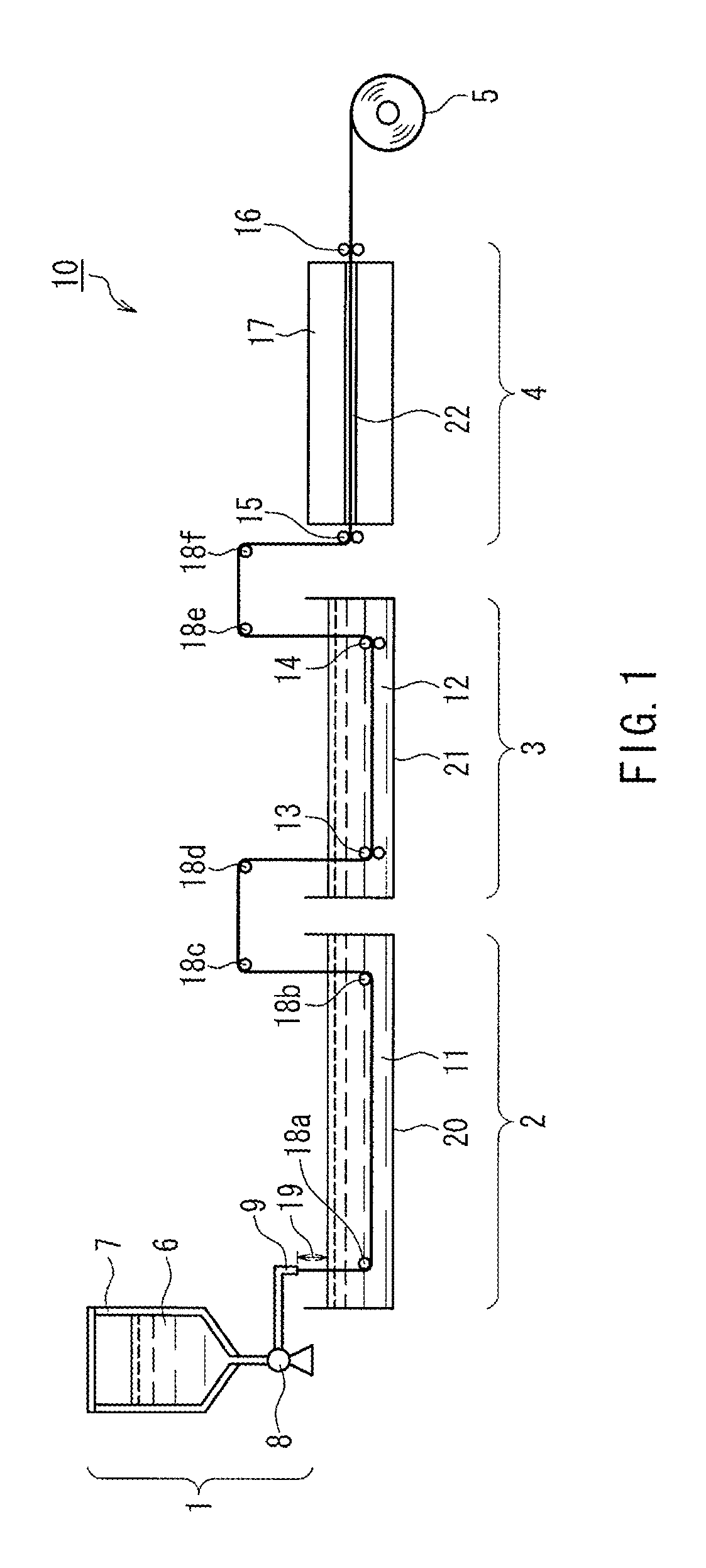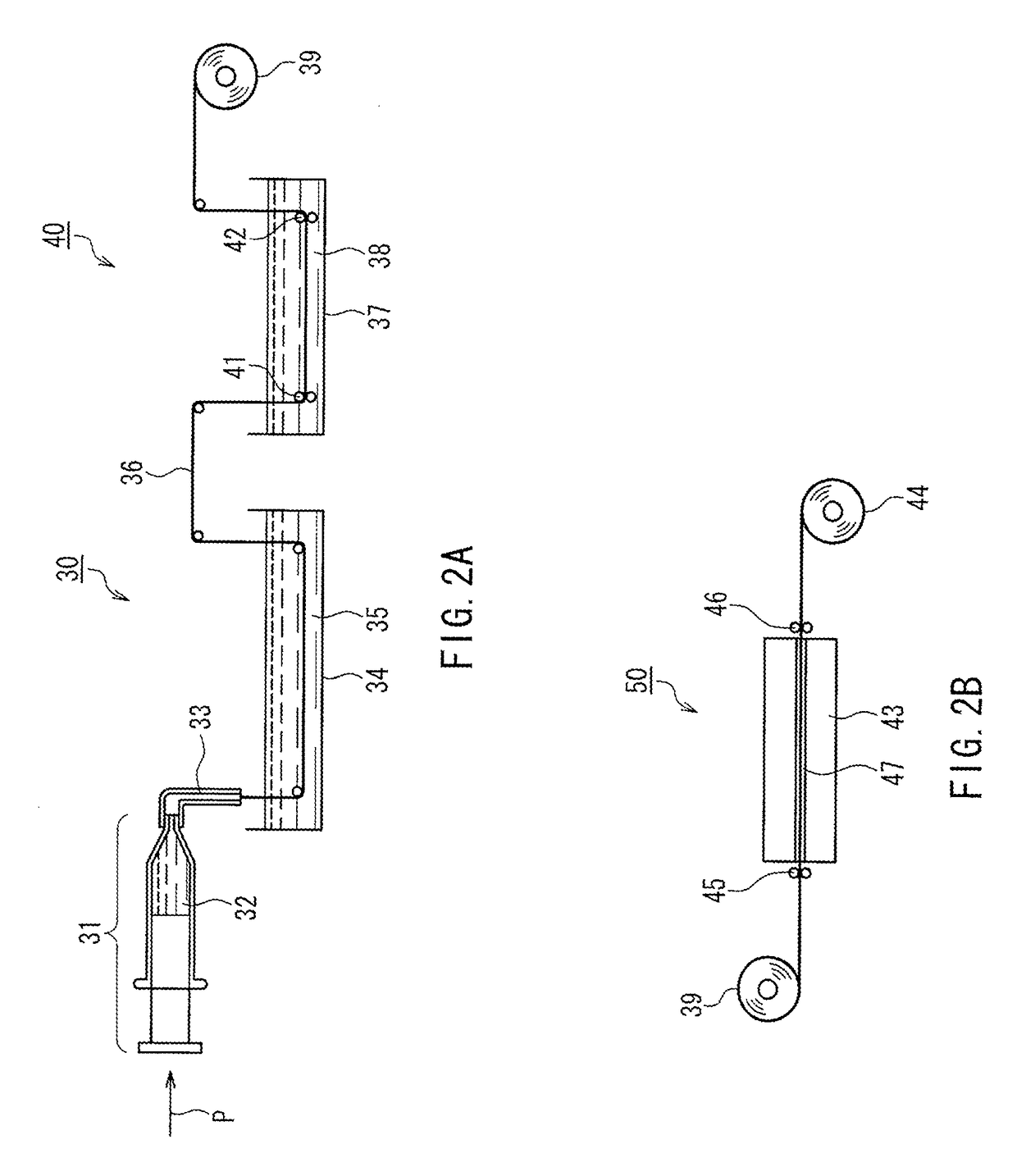Artificial polypeptide fiber and method for producing the same
a technology fibers, which is applied in the field of artificial polypeptide fibers, can solve the problems of insufficient toughness of conventional artificial polypeptide fibers, and achieve the effects of high toughness, high stress and toughness
- Summary
- Abstract
- Description
- Claims
- Application Information
AI Technical Summary
Benefits of technology
Problems solved by technology
Method used
Image
Examples
examples
[0048]Hereinafter, the present invention will be described in further detail by way of examples. It should be noted that the present invention is not limited to the following examples.
examples 1-5
Comparative Examples 1-2
Gene Synthesis
[0049](1) Gene Synthesis of ADF3Kai
[0050]Part of the amino acid sequence of ADF3 (GI: 1263287), which is one of two major dragline proteins of Araneus diadematus, was obtained from the NCBI web database, and synthesis of a gene encoding an amino acid sequence (SEQ ID NO: 5) was outsourced to GenScript, Inc. The amino acid sequence (SEQ ID NO: 5) is one obtained by adding an amino acid sequence (SEQ ID NO: 7) composed of a start codon at a N-terminal, His 10 tags and an HRV3C Protease (Human rhinovirus 3C Protease) recognition site, to the said amino acid sequence of ADF3. Consequently, a pUC57 vector to which a gene of ADF3Kai having a base sequence represented by SEQ ID NO: 8 had been introduced was obtained (having an Nde I site immediately upstream of 5′ terminal of gene and an Xba I site immediately downstream of 5′ terminal of gene). Then, the gene was subjected to a restriction enzyme treatment with Nde I and EcoR I, and recombined into a ...
PUM
| Property | Measurement | Unit |
|---|---|---|
| temperature | aaaaa | aaaaa |
| temperature | aaaaa | aaaaa |
| temperature | aaaaa | aaaaa |
Abstract
Description
Claims
Application Information
 Login to View More
Login to View More - R&D
- Intellectual Property
- Life Sciences
- Materials
- Tech Scout
- Unparalleled Data Quality
- Higher Quality Content
- 60% Fewer Hallucinations
Browse by: Latest US Patents, China's latest patents, Technical Efficacy Thesaurus, Application Domain, Technology Topic, Popular Technical Reports.
© 2025 PatSnap. All rights reserved.Legal|Privacy policy|Modern Slavery Act Transparency Statement|Sitemap|About US| Contact US: help@patsnap.com



